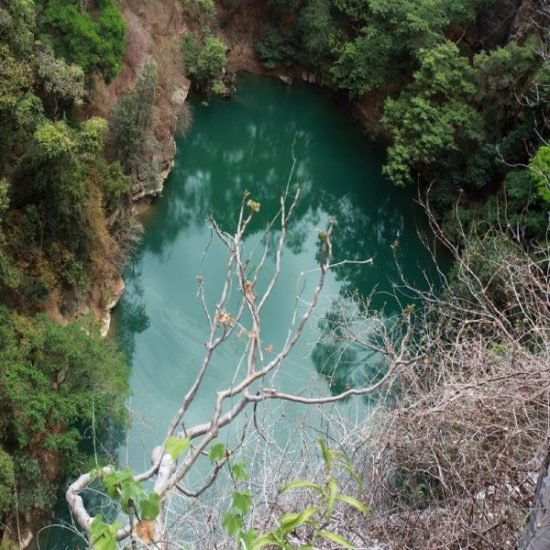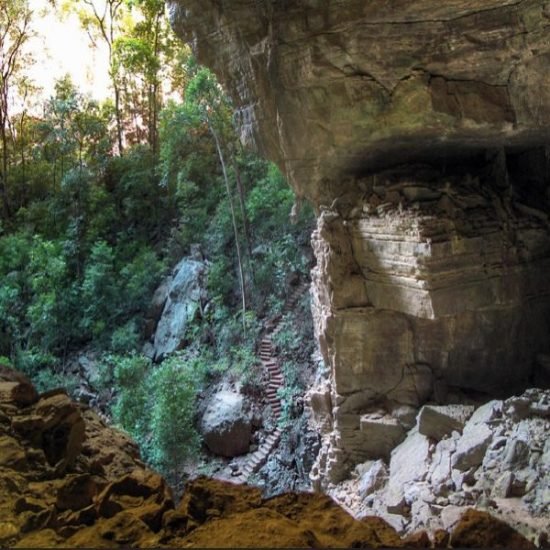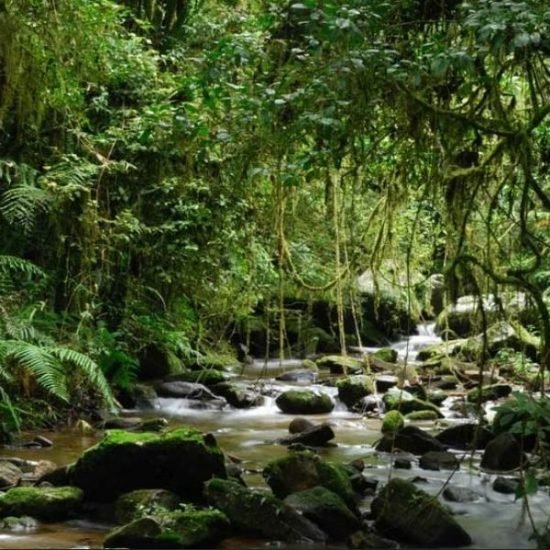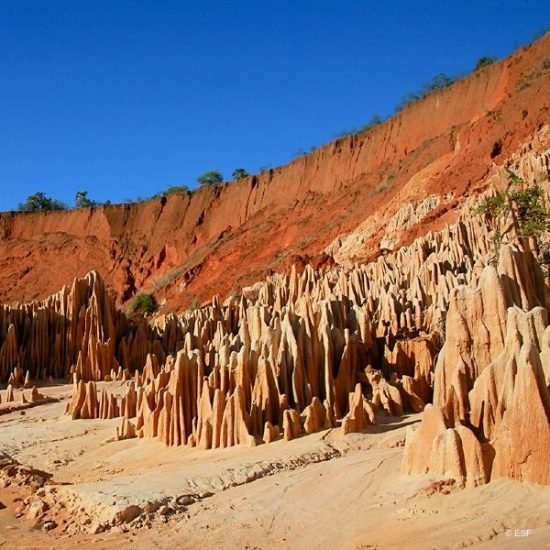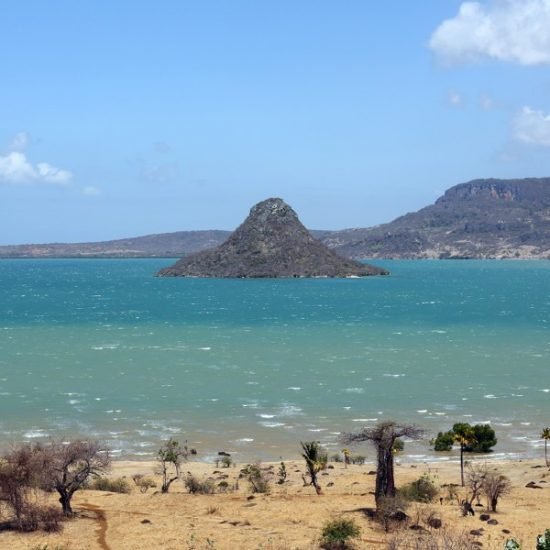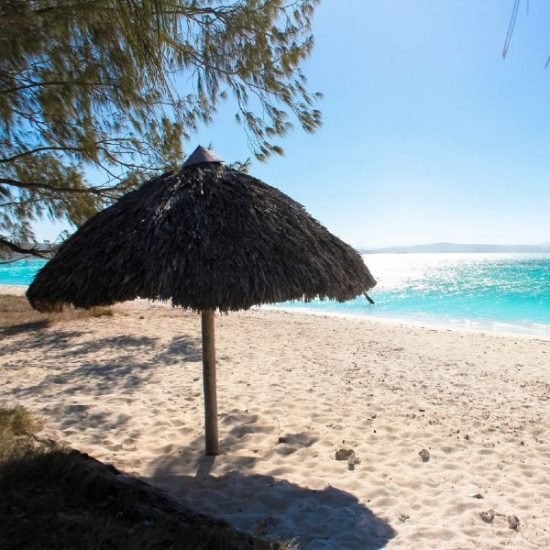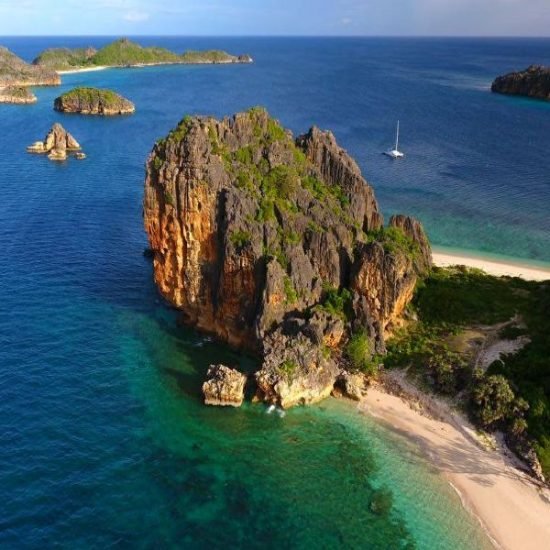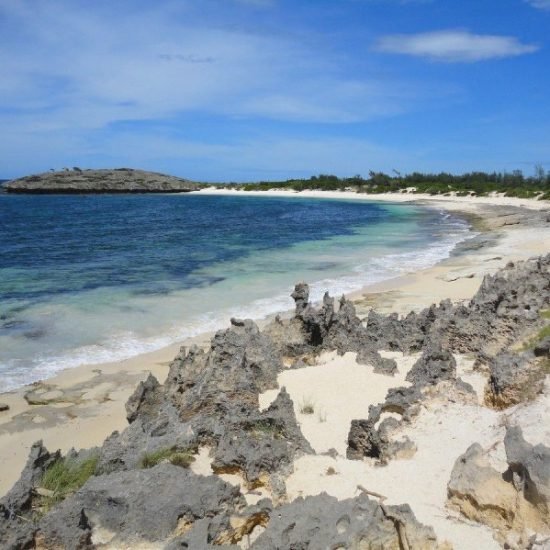Marojejy And The North of Madagascar
€1950 per person
A naturalistic journey off the tourist routes across the North of Madagascar. From the National Park of Ankarana to Marojejy, from the forests of Daraina to the Marine Park of Nosy Hara to the colonial ville of Diego Suarez. Adventure packed trip for nature lovers.
Highlights
Ankarana National Park, Loky Manambato, Marojejy National Park, Andriafamena Reserve, Nosy Hara Marine Reserve, Three Bays, Diego Suarez
Departure/Arrival
Nosy Be
When to Go
August - November
Included
Private Speedboat Nosy Be - Ankify - Nosy Be | Private Car Throughout The Tour | Accompanying Guide | Entry Fee of Mentioned Excursions | Hotels on Dinner and Bed and Breakfast basis | Camping in Marojejy on Full Board basis
Not Included
Entry Visa (€35 pp) | Lunches when not camping | Drinks | Personal Expenses | Anything not Mentioned in Included
What to Bring
Comfortable athletic clothing, hiking shoes, sleeping bag, hat and warm light jacket and light trench coat.
Options
If the tour departs and ends in Diego Suarez, save up to €150 pp (based on 2 people traveling).
Prices per person
- 1 Traveler €3500, 1 single
- 2 Travelers €2300, 1 tw/dbl
- 3 Travelers €2100, 1 tpl
- 4 Travelers €1950, 2 tw/dbl
For more options, please contact us
15 Days
1
Day 1 Nosy Be - Ankify - Ankarana 1 hour speed boat and 150 km, 4 hours' drive
Pick up at your hotel by 7.30 AM to begin our journey to the far north of Madagascar. Transfer to the port of Nosy Be to board a private speed boat direct to Ankify. In Ankify our car will be waiting to head north to Ankarana, 4 hours away. The Ankarana National Park is a complex of limestone rocky pinnacles, called Tsingy, formed by the erosion caused by rich waterways, patches of dense tropical jungle, strips of deciduous forest, canyons and deep caves. Arrival is scheduled for 1PM. After a lunch break, we will visit the park choosing a 2-hour circuit to see the Tsingy, the Perte des Rivieres and a cave. Hotel Relais Ankarana or similar.
2
Day 2 Ankarana - Daraina, 140 km, 9 hours' drive
In the morning we return to Ambilobe and head East, driving on one of the worst national road of Madagascar. The village of Daraina offers us a glimpse of the beauty of the northern region of Madagascar and the Vanilla coast. We will spend the night in Bekaraoka. The forests of Bekaraoka and Binara have lush flora and an exceptional variety of fauna. Among the fauna we mention the rare golden crowned sifaka, also called Sifaka of Tattersalli, the brown lemur of Sanford, the bamboo lemur of Sambirano and the feline fossa. Upon arrival, we will visit the local villages where we will certainly see the gold miners, one of the main sources of income for the local population. Night walk in search of nocturnal lemurs around the camp. Hotel Camp Tattersalli.
3
Day 3 Daraina - Vohemar 50 km, 2 hours' drive
We begin the day hiking in the Binara forest just 45 minutes from Daraina. The forest of Binara marks the transition zone between the east and west of northern Madagascar. The park offers a luxuriant flora and numerous points of view. After our trek of ca. 2 hours, we continue East to Vohemar in the Sava region, renowned for its vanilla cultures. We will arrive in Vohemar in the middle of the afternoon. Bahie de Iharana hotel or similar.
4
Day 4 Vohemar - Sambava - Marojejy Park 250 km, 6 hours' drive and 4 hours' walk
We reach the small village of Manantenina in 6 hours, the entrance door of the Marojejy National Park. The Marojejy massif is home to exceptional biodiversity: 12 distinct species of lemurs, including the silky sifaka which is endemic to the region. In addition, there are approx. 125 bird species, 150 reptile and amphibian species, 30 palm species and 300 fern species. A night visit is scheduled around Mantella Camp. Camping on full board basis.
5
Day 5 Marojejy Park
Breakfast and departure for Camp Simpona. We have 7 hours ca. of hiking with an increase in altitude of approx. 800 m. If we are lucky, we can see the extremely rare silky sifaka, one of the most endangered species of lemurs on the whole island of Madagascar. We will arrive in the Camp Marojejya area by noon, just for a quick lunch and continue our walk to Camp Simpona where we will arrive for early afternoon. Upon arrival, we will visit the surrounding area in search of the park's endemic flora and fauna. If you have the energy, we could go for a night walk again. Full board camping.
6
Day 6 Marojejy Park
Breakfast and departure by sunrise, today we can reach the highest point of Marojejy at 2132 meters above sea level. It will take approx. 4 hours to cover almost 900 vertical meters which separate us from the summit. If we are lucky and the weather permits, we could admire the exceptional view of the Indian Ocean and part of northern Madagascar. At the top we can stay approx. 1 hour, then descend to Marojejya Camp, for another 3 hours walk, for late lunch and spend the night. Other possibilities for afternoon and evening walks. Full board camping.
7
Day 7 Marojejy Park - Sambava
In approx 5 hours hike, downhill, we should reach Manantenina, the entrance of the park, where our car will be waiting. We then drive to Sambava, 2 hours away. We will arrive in Sambava in the early evening. Planned Hotel Carrefour.
8
Day 8 Sambava - Vohemar 150 km, 4 hours drive
Today we will take it easy. In the morning we visit the world capital of Vanilla, Sambava with its centers where vanilla is processed and also one of the largest coconut plantations in Madagascar. We spend the afternoon on the go to reach Vohemar. Hotel Bahie de Iharana.
9
Day 9 Vohemar - Ankarana 150 km, 10 hours' drive
The whole day is dedicated to reach Ankarana, our next stop, 10 hours' away. Hotel Relais Ankarana or similar.
10
Day 10 Ankarana - Andriafamena 50 km 3 hours' drive
In the morning we visit of the National Park of Ankarana, a 4/5 hours' hike. After a brief lunch break we continue north, to reach the village of Anjahankely in the Andriafamena reserve. We are in a spectacular place, in a few km on foot you go from tropical forest to dry forest or transition forest. We will find many endemic plants and with luck, the rare black lemur sifaka de Perrier, endemic to the area. Amongst the lemurs, let's also mention the Eulemur Sanford, the Eulemur Coronatus, as well as species of nocturnal lemurs such as the dwarf lemur or grey mouse lemur. Night walk in the area surrounding the camp in search of nocturnal lemurs. Hotel Black Lemur Camp.
11
Day 11 Andriafamena - Red Tsingy - Ramena 170 km, 6 hours' drive
In the morning we will visit Andriafamena Reserve, we will select the circuit with the local guide. We have to leave the reserve by noon to reach the next sight, the Red Tsingy. With some luck, it will be a sunny day, and for sunset the colors are fantastic. After the Red Tsingy, we continue north to Ramena. Hotel Lakana Plage.
12
Day 12 Ramena
After breakfast we embark on a small boat for local use to reach Suarez Island, in the Emerald Sea. The crossing will last approximately 45 minutes, depending on the winds. Upon arrival, you will seem to dream, the sea and the beach are truly of an impressive beauty. You will have time to relax on the white beach and the warm turquoise sea. The return is scheduled for 2PM to take advantage of the favorable winds. Upon arrival in Ramena by car we visit the splendid Three Bays and the lighthouse at Cap Mina with an incredible view of the Indian Ocean which enters Antsiranana Bay.
13
Day 13 Ramena - Ampasindava - Nosy Hara 40 km, 2 hours drive and 1 hour by boat
Departure for 6 in the morning, by car we reach the village of Ampasindava located in the Courier Bay. From Ampasindava with a small motor boat we reach the sacred archipelago of Nosy Hara, aka the coral island. The archipelago of Nosy Hara consists of about 12 small islands surrounded by the almost intact coral reef. It was one of Madagascar's first marine protected areas, and became a National Park in 2012. The islands combine limestone karst formations (similar to Tsingy), white sandy beaches and endemic vegetation. With 5 species of sea turtles, dolphins and dugongs, snorkelling is the main activity in these parts. Full board camping in Nosy Hara.
14
Day 14 Nosy Hara - Ampasindava - Diego Suarez 1 hour by boat and 40 km 2 hours' drive
We spend the morning in Nosy Hara. Return to Ampasindava by 1 pm. Guided tour of Diego Suarez and free afternoon in this lovely colonial town. Jardin Exotique Hotel or similar.
15
Day 15 Diego Suarez - Ankify - Nosy Be 220 km 8 hours' drive and 1 hour boat
Another early morning, by 6AM we have to leave Diego Suarez to be In Ankify no later than 2PM. In Ankify we board a private speedboat directo to Nosy Be. Transfer to your chosen hotel and end of our services.
The National Park of Ankarana
The Ankàrana Special Reserve (National Park) allows you to see tsingy, these karst formations offering the rather breathtaking vision of hundreds of sharp limestone needles and peaks, erect towards the sky. In addition, water erosion has caused the creation of more than 100 caves which were inhabited during inter-ethnic conflicts. Some even house royal tombs. A dream place for hikers.
Loky Manambato (Daraina)
The Loky Manambato Protected Area, which is accessible from Daraina, about 53 km from Vohemar, is one of the best destinations for ecotourism on the Big Island. Indeed, this protected area shelters an astonishing biodiversity whose rate of endemism can reach 80%. It is best known as the natural refuge of the famous lemur propithecus tattersalli.
Vohemar
Coastal city in the northeast of Madagascar, the city of Vohémar is located in a bay that benefits from natural protection against bad weather and other natural phenomena of Indian Ocean. Green city, with the sweet scent of vanilla never too far, Vohémar, is a municipality of spice producers and also a fishing town. Vohemar is the only port of the northeast area of Madagascar.
Marojejy National Park
60 km from Sambava, Marojery is arguably the most beautiful park in Madagascar. This "wonder of nature" has the unique property on the island of being traversed by a primary forest over 2000 meters above sea level. Consequently, the park presents a rare diversity in humid tropical environment.
Sambava
Sambava is the hub of the vanilla and coffee trade of Madagascar. It also has the largest industrial coconut grove in the country. The city does not deserve a big stop (except to buy a vanilla pod in season). The Sambava river cuts the city in two. The center and the main shops are located south of the bridge.
Andrafiamena Reserve
It is a Nature Reserve of about 30,000 hectares, with very varied landscape, made up of subtropical primary forest, stoneware massifs and calcareous formations called Tsingy. Great variety of lemurs, we can also find a great variety of woes (49 different species), endemic plants, reptiles (chameleons and snakes) and a large number of amphibians.
The Red Tsingy of Irodo Valley
50 km south of Diego-Suarez is a group of beautiful red tsingy, to visit in the afternoon before sunset to profit from the great colors. These tsingy are the result of an erosion also called limestone pavement. The mixture of different oxides and the work of time gave birth to a set of a few hundred small fairy chimneys.
Ramena
Twenty kilometers from Diégo-Suarez, Ramena a small authentic fishing village with a great choice of shacks that serve the most amazing seafood at great prices. The beach is also great with great warm clear water. A great destination for beach lovers.
Nosy Hara
The Nosy Hara archipelago, in the north in the province of Antsiranana, is located between Cape Anorintany and Cape Vohilava. Covering an area of approximately 75,000 ha, it consists of 17 islands surrounded by vast coral reefs. An escape from the real world.
Diego Suarez
At the northern tip of Madagascar is Diego-Suarez (Antsiranana). It is the 3rd port of Madagascar. Former French garrison, the city has lost its grandeur but still retains a feeling of nostalgia and great atmosphere. The marks of colonization haunt her like ghosts. There is an amazing cultural diversity in the city, always ready to party. Great place for nature lovers, natural and marine parks are a stone throw away.

